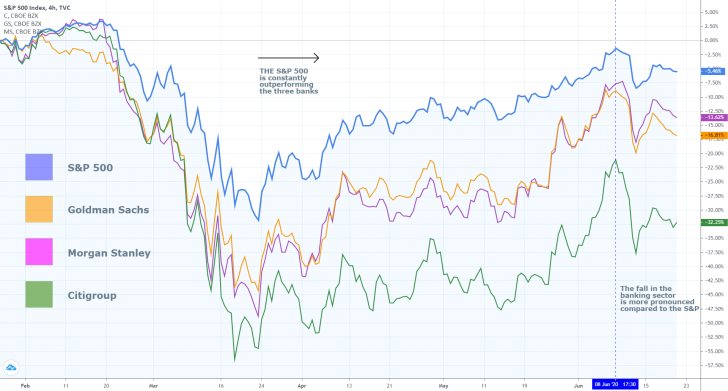
Federal Reserve Board to Release the Results of its Stress Tests of Major US Banks for 2020
The Federal Reserve Board is set to start releasing the results of its stress tests by the 30th of June. These exercises are of vital importance because they demonstrate the level of preparedness of major US banks to overcome strong economic tremors and deep recessions.
Essentially, the results of the stress tests illustrate the banking sector's ability to withstand significant credit crunches under varying hypothetical scenarios, such as increased domestic unemployment, diminished international economic activity, fallen gross domestic product and others.
"[…] which (the tests) ensure that large banks have adequate capital and processes so that they can continue lending to households and businesses, even during a severe recession. The harshest scenario includes a severe global recession with heightened stresses in corporate debt markets and commercial real estate, and for banks with large trading operations, additional pressure on leveraged loans."
The scope and focus of the tests have been readjusted recently, to reflect on the evolving nature of the coronavirus crisis and its impact on the financial markets.
The chief purpose of the exercises is to demonstrate what kind of recovery can be fostered (V-Shaped, U-Shaped, or W-Shaped), given the current capabilities of the banking sector.
The underlying volatility on the share prices of major US banks, such as Citigroup, Goldman Sachs, Morgan Stanley, and others, can be anticipated to peak this week as the results for each individual bank get announced.
France and Germany are Scheduled to Release Crucial Industrial Data on Tuesday
The two biggest economies in the Eurozone are going to publish pivotal services and manufacturing PMI data each, which is undoubtedly going to stir heightened volatility in European markets.
The prevailing consensus forecasts project a stable improvement in the two countries' industrial activity, thereby continuing the trend from a month prior.
Arguably, the most important reading from the four underlying gauges will be encompassed by the German services data.
The economy of the Eurozone is mostly service-oriented, which means that the observed performance in that regard of the bloc's largest economy is going to highlight the likely road to recovery for the entire Eurozone.
Overall, if the prevailingly optimistic market expectations of robust industrial activity in France and Germany are fulfilled tomorrow, the single currency is likely to be strengthened as a consequence.
This is especially important for the EURUSD pair, which appears to be forming a minor retracement at present. If the manufacturing and services data is indeed as solid as initially anticipated, this might prompt the EUR to cease depreciating against the greenback.
This, in turn, would create advantageous opportunities for reversal trading on the EURUSD, provided that the pair starts trading higher from a new swing low following the publication of the underlying data.
The RBNZ is Meeting this Wednesday to Deliberate on its Monetary Policy
The Monetary Policy Committee (MPC) of the Reserve Bank of New Zealand is meeting this Wednesday, and the consensus forecasts project no changes to the Official Cash Rate. At present, the Committee maintains a near-negative interest rate of 0.25 per cent.
In light of recent trends observed in the global economy, the RBNZ is likely to conduct its monetary policy in a similar fashion to other major central banks, such as the BOE and the FED.
In other words, the Committee is likely to loosen up its policy by increasing the scope of its underlying asset purchase programs.
Such a course of action would bolster the overall liquidity volume currently circulating within the economy, thereby cushioning the protracted impact of the coronavirus fallout on New Zealand's financial markets.
At its previous meeting, the Committee more than doubled the breadth of its QE programs, which subsequently led to a new substantial bullish run for the Kiwi.
If the market reacts so energetically to RBNZ's monetary policy stance once again, the NZDUSD can be anticipated to resume trading higher, provided that the MPC does indeed increase the aggregate money supply.
Due to the anticipated surge in the underlying volatility of major US banks' share prices this week because of FED's stress tests, the 4H price chart below demonstrates the current relationship between the S&P 500, and the share prices of three major US banks – Morgan Stanley, Citigroup and the Goldman Sachs Group.
As can be seen, the index is continually outperforming the banking sector, and even minor ripples are having a more sizable impact on the Big Three's price actions. Depending on the findings of the stress tests, this relationship can either be strengthened or invalidated.





















